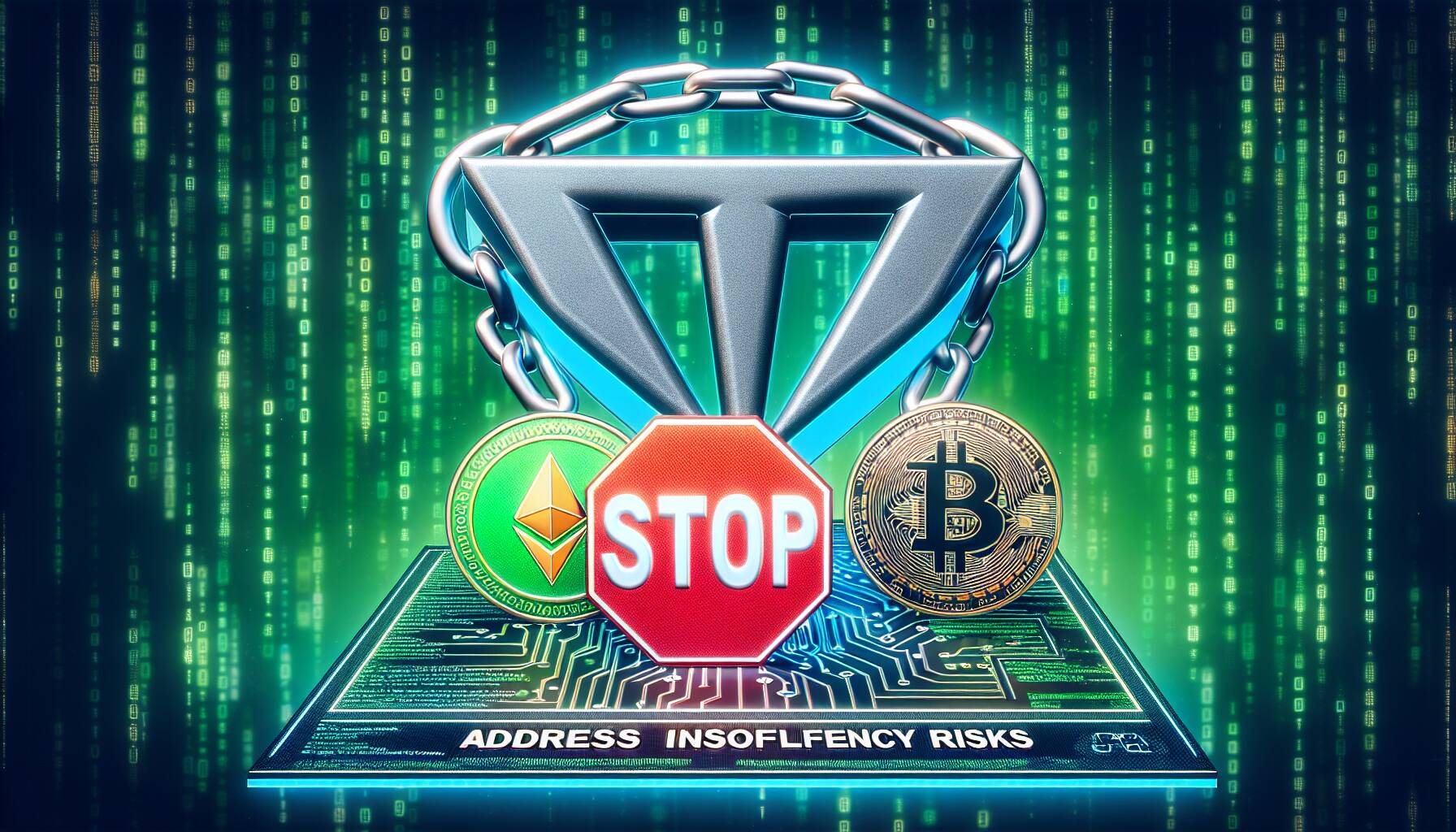In a significant turn of events, the Interblockchain settlements protocol THORChain has temporarily halted withdrawals for bitcoin (BTC) and ether (ETH) from its lending and savers programs. This maneuver aims to stave off potential insolvency risks that could jeopardize the financial stability of the platform. As conveyed through communications on THORChain’s Telegram channels, network node operators initiated a strategic 90-day pause early Friday morning to develop a comprehensive plan for addressing existing debts.
THORChain’s lending program solely supports BTC and ETH, while its saver vaults are designed for a wider array of assets. The risk of insolvency looms due to a scenario where all loans and savers positions could be liquidated simultaneously, which, combined with a negative market sentiment leading to a drop in RUNE value, could create critical financial turmoil. THORChain manages its lending obligations by minting RUNE, the native token, and converting it into liquidity pools, which raises concerns about the platform’s ability to maintain solvency.
Heightening this precarious situation, various community members have raised alarms about reported liabilities approaching 0 million, with around 7 million residing in liquidity pools. These funds could potentially be withdrawn or liquidated by liquidity providers (LPs) or RUNE holders in response to broader market panic. However, users will be relieved to know that THORChain’s cross-chain swaps, which are a key feature of its infrastructure, remain functional and unaffected by these withdrawal restrictions. This means that users can continue to engage in swaps and access liquidity pools without interruption during this critical period.

THORChain Pauses Bitcoin and Ether Withdrawals
THORChain, an interblockchain settlements protocol, has taken significant steps to address potential financial risks. Here are the key points to consider:
- Withdrawal Pause: THORChain has paused withdrawals for Bitcoin (BTC) and Ether (ETH) in its lending and savers programs.
- Preventing Insolvency: The decision aims to mitigate potential insolvency risks as stated by network node operators.
- 90-Day Plan: The network plans to formulate a strategy over a 90-day period to address debts and financial stability.
- Lending Program Limitations: Currently, THORChain’s lending program primarily involves BTC and ETH, while its saver vaults support additional assets.
- Risk of Mass Withdrawals: A situation arose where simultaneous closures of loans and savings could lead to insolvency, especially if the RUNE token’s market sentiment declined sharply.
- RUNE Minting: The protocol meets its lending obligations by minting the RUNE token, which is sold to provide liquidity.
- Deposits Suspended: Deposits have been turned off for a year due to community concerns regarding associated risks.
- Community Liabilities: Allegations within the community suggest liabilities could be as high as 0 million, with 7 million sitting in liquidity pools.
- Panic Selling Potential: In a crisis, liquidity providers (LPs) or RUNE holders may withdraw or sell their positions, exacerbating financial instability.
- Uninterrupted Swaps: Despite the issues, THORChain’s cross-chain swaps and liquidity pools remain operational without disruptions.
This situation serves as a significant reminder for users and investors in crypto ecosystems about the importance of liquidity management and understanding the risks involved in lending and savings protocols.
THORChain Pauses Withdrawals: Analyzing the Impact on the DeFi Landscape
THORChain’s recent decision to halt withdrawals of Bitcoin (BTC) and Ether (ETH) from its lending and saver programs has sparked significant discussion within the decentralized finance (DeFi) community. This move, intended to mitigate insolvency risks, poses both profound implications and contrasts with similar platforms in the space.
On one hand, THORChain’s proactive approach to addressing potential insolvency showcases a commitment to sustainability, a competitive advantage that other DeFi protocols could emulate. Unlike platforms that have faced catastrophic failures without preventive measures, THORChain’s decision reflects a willingness to put community interests first, potentially preserving trust in the long run. However, this comes at the cost of immediate liquidity for users, creating a barrier that may deter new users and investors who prioritize real-time access to their assets.
Compared to other lending protocols, such as Aave or Compound, which maintain operational transparency and allow seamless asset management, THORChain’s pause raises questions about its liquidity health and overall governance. Users might gravitate towards platforms with stable performance and consistent withdrawal capabilities, especially in times of market volatility. The pause could thus siphon off potential liquidity as users reassess their options amid fears of a liquidity crunch.
Moreover, the allegation of liabilities nearing 0 million adds significant pressure on the platform’s reputation, with existing users now faced with the daunting task of evaluating their risk exposure. While THORChain’s liquidity pools remain functional for swaps, the fear of potential insolvency can trigger panic withdrawals among liquidity providers, exacerbating the situation further. This highlights the delicate balance DeFi platforms must maintain between operational integrity and user confidence.
For users, THORChain’s pause may create a dual-edged sword: while existing users might appreciate the protective measures, potential users may seek alternatives that offer more stability and transparency. The pause could deter new investment and erode market share, particularly as competitors capitalize on these vulnerabilities to attract those wary of the risks associated with THORChain’s current predicament. Overall, while this measure serves to safeguard existing assets, it could ultimately backfire if not managed with clear communication and robust recovery strategies.

















